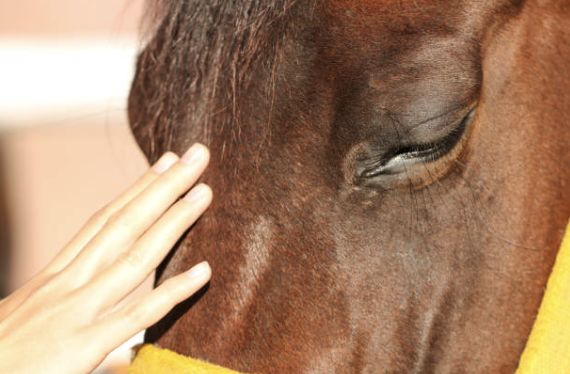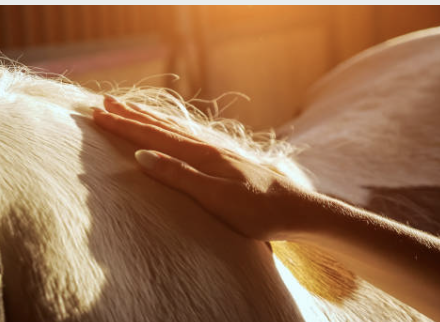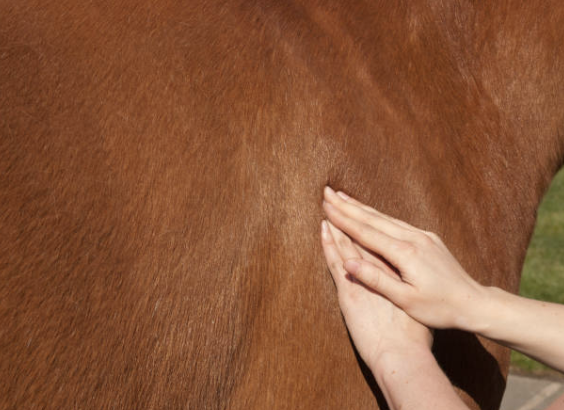Relax, Release, Rehabilitate
Equine massage plays a crucial role in maintaining the well-being and performance of horses. Like humans, horses can experience muscle tension, stiffness, and soreness due to various factors such as exercise, training, or injury. Massage therapy helps alleviate these issues by promoting relaxation, improving circulation, and releasing tension in the muscles. Not only does it enhance physical comfort, but it also aids in preventing injuries and speeding up the recovery process. Additionally, equine massage fosters a deeper bond between the horse and the handler or rider, as it allows for moments of focused attention and care. By incorporating massage into the overall care regimen, horse owners and caretakers contribute significantly to their equine companions’ overall health and happiness, ultimately enhancing their performance and quality of life.
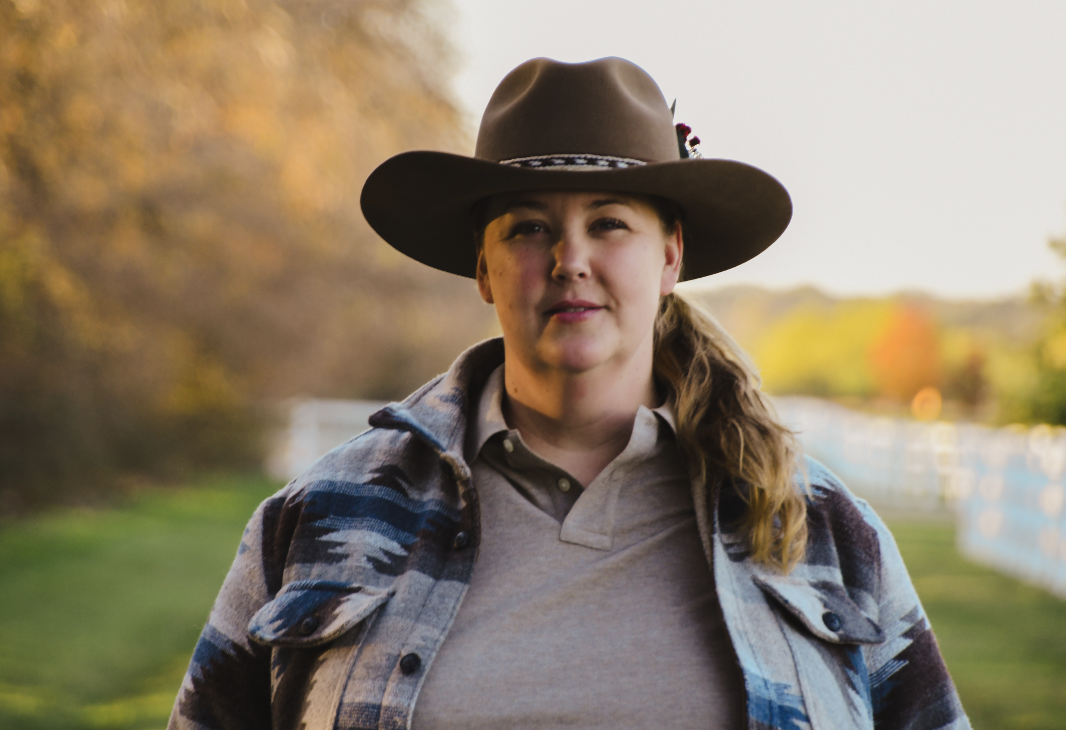
Hey there, I’m Rebecca Barrington. For over 30 years, I’ve been deeply immersed in the world of horses, wearing various hats from rider to trainer, coach, and competitor in both the racing and sport horse realms. It’s been quite the journey!
My approach revolves around recognizing horses as more than just animals—they’re remarkable athletes and distinct personalities deserving of holistic care. Through my certification as an Equine Myo-manipulative Functional Therapist, I’ve honed the art of therapeutic touch, melding it with a profound understanding of equine athleticism.
I’m passionate about fostering balanced, pain-free relationships between horses and their human companions. There’s something magical about the connection we share with these magnificent creatures—it’s a partnership unlike any other.
As we journey together, I strive to help horses and their owners move forward harmoniously, unlocking their full potential and nurturing a bond built on trust and understanding.
Our responsibility is to take care of these incredibly loyal and powerful beings. In this dance of empathy and understanding, we discover the profound ability to enrich each other’s lives. My work is a reminder of the impact animals can have on our journey and the beauty of the relationships we form with them.
What does a session look like?
As an equine massage therapist, my first step is always observation. I watch the horse move, paying close attention to their posture, gait, and any signs of discomfort or asymmetry. Next comes palpation – I gently feel the horse’s muscles, tendons, and joints to identify areas of tension or stiffness. Assessing their range of motion gives me further insight into any restrictions they may have. Throughout this process, I also gather information from the horse’s handler or rider, learning about their history, performance, and any recent changes.
Once I’ve gathered all the necessary information, it’s time to begin the session. I set goals based on what I’ve observed and the horse’s individual needs. Then, I start with a variety of massage techniques, like effleurage for soothing strokes, petrissage for deeper kneading, and gentle stretching. The key is to maintain a calm and reassuring presence, building trust with the horse as I work. Throughout the session, I monitor their response, adjusting my approach as needed. I also take the opportunity to educate the handler or rider on ways to support the horse’s musculoskeletal health through proper care and exercises. After the session, I provide recommendations for post-care, such as icing sore areas or scheduling follow-up sessions as necessary.
In essence, my goal as an equine massage therapist is to promote relaxation, alleviate tension, and enhance the overall well-being and performance of each horse I work with.
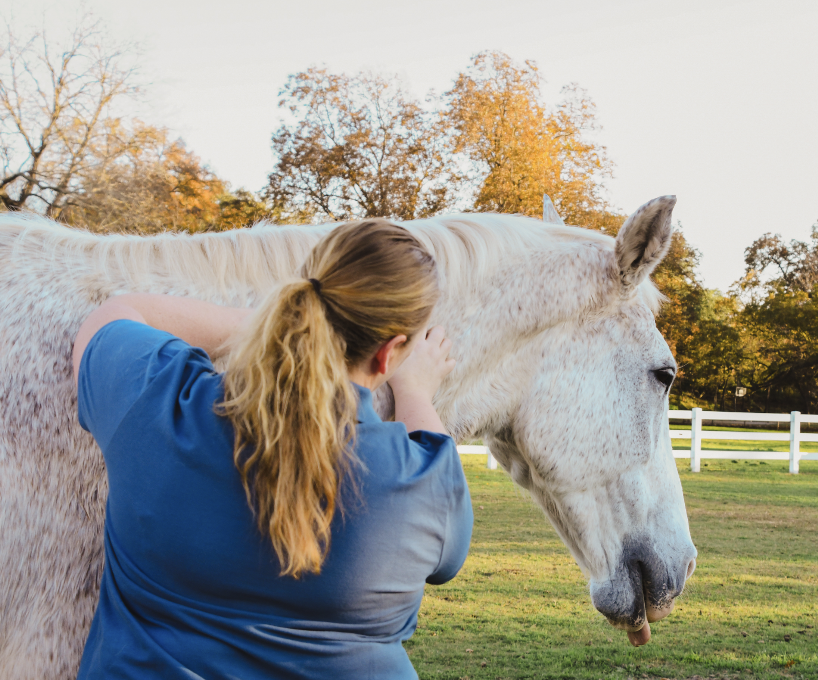
Recuperation/Therapeutic Massage Session
Recuperation/therapeutic massage sessions for horses involve targeted techniques aimed at aiding in the recovery process from injuries, reducing muscle soreness, and promoting overall relaxation and well-being. These sessions typically include gentle manipulation of muscles, tendons, and ligaments to alleviate tension, increase circulation, and enhance flexibility. By addressing specific areas of concern and tailoring the massage to the horse’s individual needs, these sessions play a crucial role in supporting the horse’s physical recovery and emotional balance. They are often integrated into rehabilitation programs or used preventatively to maintain optimal health and performance.
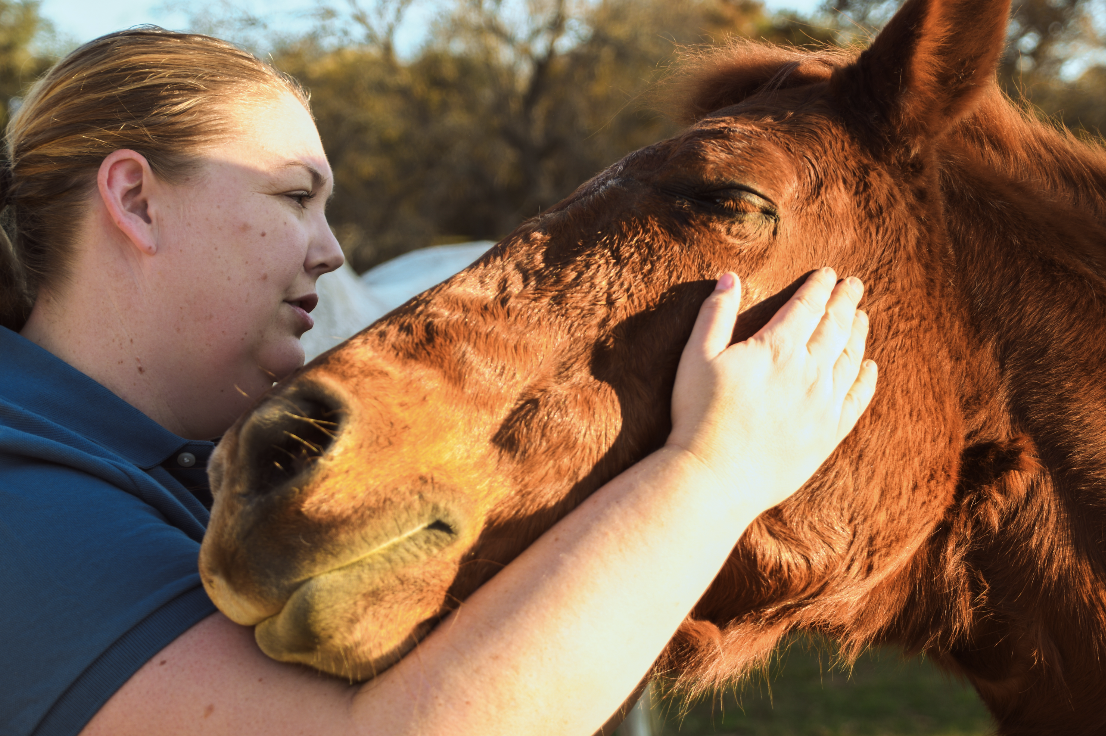
Relaxation Massage Session
Relaxation massage sessions for horses are focused on providing comfort, reducing stress, and promoting overall relaxation. Through gentle strokes, kneading, and stretching techniques, these sessions aim to release tension, improve circulation, and enhance the horse’s well-being. By creating a calming environment and addressing areas of tightness or discomfort, relaxation massage helps horses unwind both physically and mentally, fostering a sense of tranquillity and contentment. These sessions are beneficial for maintaining the horse’s mental and emotional balance, as well as supporting their overall health and performance.
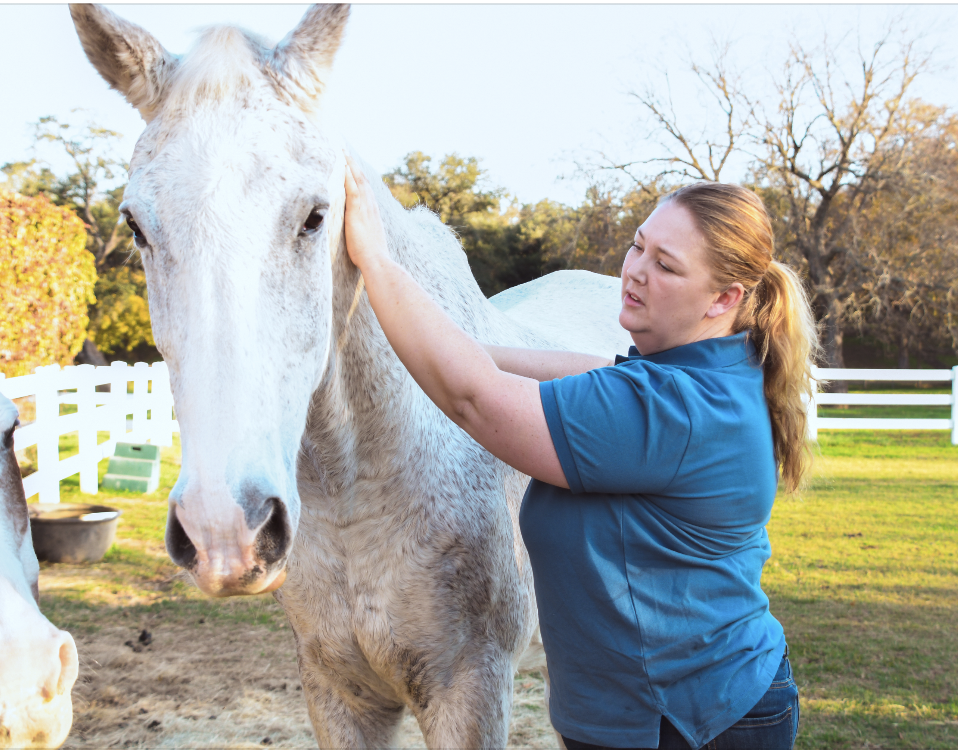
Maintenance Massage Session
Maintenance massage sessions for horses are routine sessions aimed at keeping the horse’s muscles in optimal condition. Through a combination of techniques such as stroking, kneading, and stretching, maintenance massage helps prevent muscle tension, reduces the risk of injury, and promotes overall well-being. These sessions are tailored to address any minor issues or tightness in the muscles before they develop into more significant problems. By incorporating maintenance massage into the horse’s regular care regimen, owners can support their horse’s physical health and performance, ensuring they stay happy and comfortable for years to come.
Description for this block. Use this space for describing your block. Any text will do. Description for this block. You can use this space for describing your block.
Testimonials
Some feedback from my clients
Blog
Exploring the Scientific Foundations of Regular Equine Massage Therapy
In the realm of equine care, the efficacy of various therapeutic modalities has been a subject of scientific inquiry, with equine massage therapy emerging as a compelling area of study. Delving into the physiological and biomechanical mechanisms underlying this practice unveils a plethora of scientifically substantiated benefits that underscore its significance in promoting equine health and performance.
- Musculoskeletal Benefits: Equine massage therapy exerts profound effects on the musculoskeletal system, including the reduction of muscle tension, the alleviation of stiffness, and the promotion of tissue elasticity. Scientific investigations have demonstrated that massage interventions induce physiological responses such as increased blood flow, enhanced lymphatic drainage, and modulation of neuromuscular activity, all of which contribute to improved muscle function and mobility.
- Biomechanical Optimization: Through targeted manipulation of soft tissues, equine massage therapy influences biomechanical parameters essential for optimal movement efficiency and performance. Studies have elucidated the role of massage in enhancing joint range of motion, minimizing biomechanical asymmetries, and promoting balanced muscular development, thereby facilitating biomechanical optimization and reducing the risk of musculoskeletal injuries.
- Neurophysiological Effects: The neurophysiological effects of equine massage therapy extend beyond local tissue responses to encompass broader neurological modulation. Research has indicated that massage interventions elicit neurochemical changes within the central nervous system, including the release of endorphins, serotonin, and oxytocin, which contribute to pain relief, stress reduction, and emotional well-being in equine subjects.
- Rehabilitative Potential: Equine massage therapy serves as a valuable adjunctive modality in the rehabilitation of horses recovering from musculoskeletal injuries or surgical procedures. Scientific investigations have highlighted its role in promoting tissue healing, reducing scar formation, and facilitating neuromuscular re-education, thereby expediting the rehabilitation process and enhancing functional recovery outcomes.
- Performance Enhancement: Beyond its rehabilitative applications, equine massage therapy holds promise as a modality for enhancing athletic performance in equine athletes. Evidence suggests that regular massage interventions contribute to the optimization of physiological parameters relevant to athletic performance, including cardiovascular function, muscular endurance, and recovery capacity, thereby conferring a competitive edge to performance horses.
In summary, the scientific evidence substantiating the myriad benefits of regular equine massage therapy underscores its significance as a cornerstone of comprehensive equine care practices. By integrating massage interventions informed by scientific principles into equine management protocols, practitioners can optimize the health, well-being, and performance of equine athletes, thereby realizing the full potential of this therapeutic modality in the equestrian domain.
Blog
Demystifying the Role of a Certified Equine Myo-Manipulative Functional Therapist
In the world of equine therapy, a Certified Equine Myo-Manipulative Functional Therapist (CEqMFMT) holds a unique and vital role. But what exactly does this title entail, and how does it benefit our equine companions? Let’s delve into the fascinating world of equine myo-manipulative functional therapy to uncover the answers.
At its core, a CEqMFMT specializes in the assessment and treatment of musculoskeletal issues in horses. Through a comprehensive understanding of equine anatomy, biomechanics, and manual therapy techniques, these practitioners are trained to identify and address a wide range of musculoskeletal imbalances and dysfunctions that may affect a horse’s performance, comfort, and well-being.
So, what exactly does a CEqMFMT do?
- Assessment: A CEqMFMT begins by conducting a thorough assessment of the horse’s musculoskeletal system. This typically involves observing the horse’s movement, palpating muscles and soft tissues, and identifying areas of tension, asymmetry, or discomfort. By employing a keen eye and sensitive touch, the therapist can pinpoint underlying issues that may be contributing to the horse’s condition.
- Treatment: Once the assessment is complete, the CEqMFMT develops a customized treatment plan tailored to the horse’s specific needs. Treatment techniques may include manual manipulation of muscles, fascia, and joints, as well as stretching exercises, myofascial release techniques, and corrective exercises. The goal is to restore balance, mobility, and function to the musculoskeletal system, thereby alleviating pain, improving performance, and promoting overall well-being.
- Education and Rehabilitation: In addition to hands-on treatment, a CEqMFMT plays a crucial role in educating horse owners, trainers, and caregivers about proper equine management, conditioning, and rehabilitation strategies. By empowering clients with knowledge and guidance, the therapist helps ensure the long-term health and welfare of the horse. This may involve recommending exercises, stretches, and lifestyle modifications to support ongoing recovery and maintenance.
- Collaboration: A CEqMFMT often collaborates with other equine health professionals, such as veterinarians, farriers, and chiropractors, to provide comprehensive care for the horse. By working together as a team, these practitioners can address the multiple facets of the horse’s health and well-being, ensuring a holistic approach to treatment and management.
In essence, a Certified Equine Myo-Manipulative Functional Therapist is a skilled practitioner dedicated to optimizing the musculoskeletal health and performance of horses through hands-on therapy, education, and collaboration. By harnessing the power of manual therapy techniques and a deep understanding of equine biomechanics, these therapists play a vital role in supporting the health, happiness, and longevity of our equine companions.
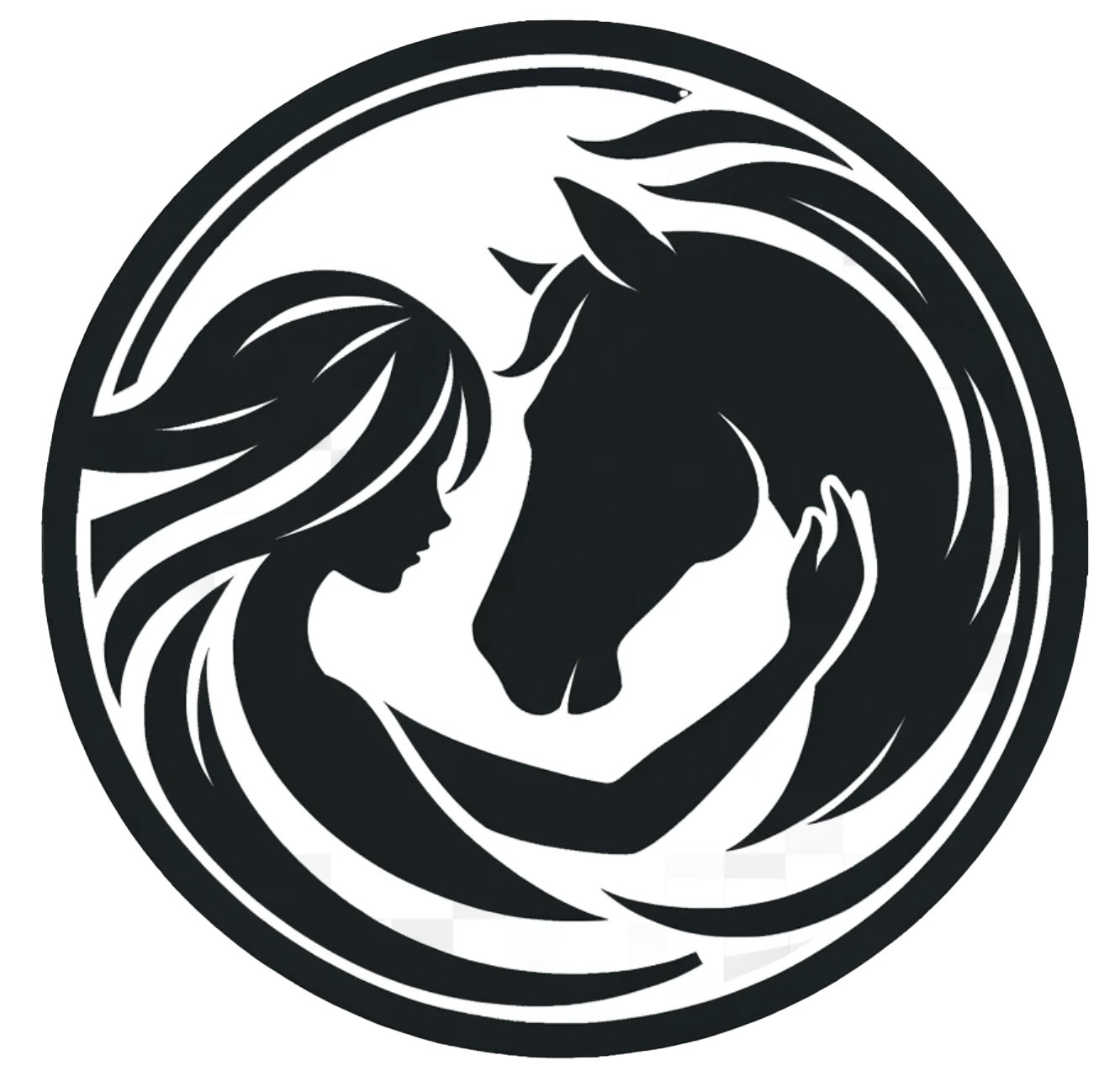
 .
. 